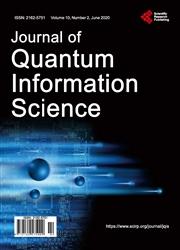A Probabilistic Paraconsistent Logical Model for Non-Relativistic Quantum Mechanics Using Interlaced Bilattices with Conflation and Bernoulli Distribution
引用次数: 2
Abstract
In this work, we make a representation of non-relativistic quantum theory based on foundations of paraconsistent annotated logic (PAL), a propositional and evidential logic with an associated lattice FOUR. We use the PAL version with annotation of two values (PAL2v), named paraquantum logic (PQL), where the evidence signals are normalized values and the intensities of the inconsistencies are represented by degrees of contradiction. Quantum mechanics is represented through mapping on the interlaced bilattices where this logical formalization allows annotation of two values in the format of degrees of evidence of probability. The Bernoulli probability distribution is used to establish probabilistic logical states that identify the superposition of states and quantum entanglement with the equations and determine the state vectors located inside the interlaced Bilattice. In the proposed logical probabilistic paraquantum logic model (pPQL Model), we introduce the operation of logical conflation into interlaced bilattice. We verify that in the pPQL Model, the operation of logical conflation is responsible for providing a suitable model for various phenomena of quantum mechanics, mainly the quantum entanglement. The results obtained from the entanglement equations demonstrate the formalization and completeness of paraquantum logic that allows for interpretations of similar phenomena of quantum mechanics, including EPR paradox and the wave-particle theory.基于合并和伯努利分布的交错双格非相对论量子力学概率副协调逻辑模型
在这项工作中,我们在半一致注释逻辑(PAL)的基础上对非相对论量子理论进行了表示,PAL是一种具有关联格FOUR的命题和证据逻辑。我们使用带有两个值注释的PAL版本(PAL2v),称为准量子逻辑(PQL),其中证据信号是归一化值,不一致的强度由矛盾程度表示。量子力学是通过交错双晶格上的映射来表示的,其中这种逻辑形式化允许以概率证据的程度的格式注释两个值。伯努利概率分布用于建立概率逻辑状态,识别状态和量子纠缠与方程的叠加,并确定位于交错比拉蒂内的状态向量。在所提出的逻辑概率准量子逻辑模型(pPQL模型)中,我们将逻辑合并的操作引入到交错的双晶格中。我们验证了在pPQL模型中,逻辑合并的操作负责为量子力学的各种现象,主要是量子纠缠,提供一个合适的模型。从纠缠方程中获得的结果证明了准量子逻辑的形式化和完整性,允许对量子力学的类似现象进行解释,包括EPR悖论和波粒理论。
本文章由计算机程序翻译,如有差异,请以英文原文为准。
求助全文
约1分钟内获得全文
求助全文

 求助内容:
求助内容: 应助结果提醒方式:
应助结果提醒方式:


